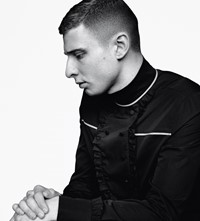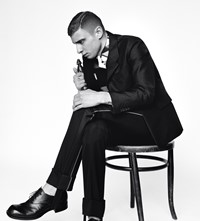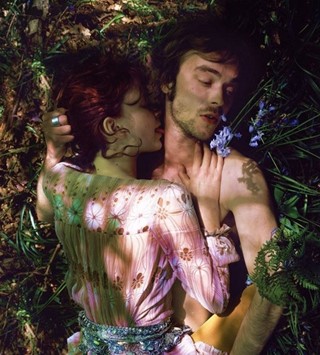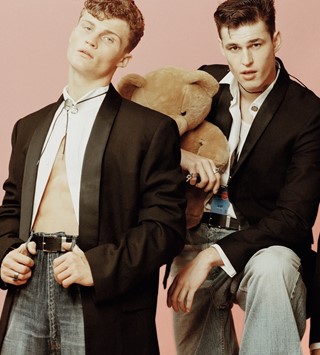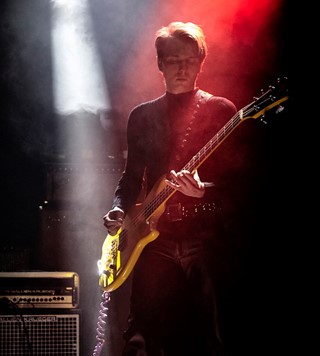Jo-Ann Furniss: The Power of Miuccia Prada
- PhotographyAlasdair McLellan
- StylingOlivier Rizzo
- TextJo-Ann Furniss
Here, Mrs Prada’s last interview before it was announced that Raf Simons would be joining her company as co-creative director – plus, Blondey McCoy modelling the A/W20 Prada collection, photographed by Alasdair McLellan and styled by Olivier Rizzo
This article is taken from the Summer/Autumn 2020 issue of Another Man:
FIVE POINTS ABOUT THE POWER OF MIUCCIA PRADA
Miuccia Prada is arguably the most influential fashion designer in the world. Until recently, there was a Holy Trinity of fashion, of those designers at work who defined and were deified by the industry: God, the Father – Karl Lagerfeld at Chanel, the Son – Miuccia Prada at Prada, the Holy Ghost – Rei Kawakubo at Comme des Garçons; three entities distinct and yet equal in their influence in shaping the course of the industry at its highest level. Now, we exist in a post-Lagerfeld fashion world, a partial Nietzschean breach in the established order of things. And yet, Miuccia Prada and Rei Kawakubo still exist, and thankfully so. Particularly as Prada is the person who articulates this moment in time through what she says, her fashion, her foundation and her leviathan brand, like no other.
Prada, the company, is still distinctly and idiosyncratically personal. With her husband, Patrizio Bertelli, who is also the CEO, she has led the way in reconfiguring what a luxury-goods business means, not just in terms of their own labels which she heads – namely Prada and Miu Miu – but by providing an example of what luxury can be for the rest of the fashion industry. This was set by something as simple as the reintroduction of a black Pocono nylon rucksack as a luxury handbag in 1985. Originally designed unlabelled by Prada in the late 1970s – the time she became the head of the family company – the first Pocono bags weren’t a hit, but have become as influential on the recent course of the luxury-goods industry as Marcel Duchamp’s Fountain on the path of contemporary art: luxury no longer defined by craft and materials, but by ideas.
Of course, Prada’s cultural recognition extends beyond fashion. She is perhaps the closest present-day figure we can correlate to Coco Chanel. In 2005, Time magazine named her as one of the 100 most influential figures of the 20th century; sat here today in Milan in January 2020, she is one of the most influential figures of the 21st.
It is 13th January 2020, the day after the Prada menswear show, and a time before any official announcements have been made about creative direction in the company. We are in Miuccia Prada’s office in the building on Via Bergamo where her interviews usually take place. There is the famous ‘chute’, a twisting slide that protrudes through the floor in the middle of the room. It is an artwork by Carsten Höller, like a post-industrial helter-skelter, that spirals through the building and dispenses its occupant in the courtyard. Occasionally, Prada is known to “have a go on the art” herself when nobody is there. Not for show, just for her own amusement. There are books stacked in her office and placed just so, face up; you cannot see the spines. They are not for ostentatious display, rather for her use only. And there is Miuccia Prada herself, dressed impeccably in a pale grey silk pyjama-ish ensemble with a dark wool sweater over it, with black, flat, boyish Oxfords and socks. All quite utilitarian apart from a glint of lunacy (making everything chicer, of course) in the massive diamond encrusted necklace she wears, with its grid-like, geometric structure, its length extended with a diamond bracelet just for the sheer hell of it, all slightly Werkstätte in style and subtle as a brick. As she will say, “Strictness and fun is key.” This is also the key to Miuccia Prada herself, who is far from the icy intellectual people presume her to be – rather she is both playful and profound, as is her work.
MIUCCIA PRADA: “IF YOU DO NOT HAVE AN IDEA IN YOUR LIFE, HOW CAN YOU LIVE? MY WHOLE THING, THROUGH THE FONDAZIONE AND PRADA, IS TO MAKE CULTURE ATTRACTIVE. THAT IS, DEEP DOWN, MY GOAL. IF IT IS NOT ATTRACTIVE, NO ONE LISTENS. IF IT IS TOO SERIOUS, NO ONE CARES AND THEY THINK IT’S BORING. IT IS TO MAKE PEOPLE UNDERSTAND THAT CULTURE IS NECESSARY IN YOUR LIFE. IT’S NOT A FLOWER IN YOUR JACKET, IT’S NECESSARY”
WORK
Work is the thing that is preoccupying Prada at the moment, both in actuality and ideologically; she’s in a sleeves-rolled-up-and-get-it-done, almost combative mood. “In this collection, I was trying to find the really deep reason for this show. And it was the respect and appreciation of the job, of work,” she explains. “Reading about the Viennese Secession, creativity was linked, not with craft in that sense of the artisanal, but with a job, with labour, even the machine. What I am really appreciating is when you go and see people doing their job, how they believe in it, how dedicated they are to it, how they devote so much attention and passion to it. Even a simple job that is done with so much dignity and with care, that makes sense with sophistication. I think I intended to evaluate culture, to evaluate expertise, because now it seems we are more superficial – I think it is time we reversed that way of thinking. Simplification and exaggerating I could say ‘ignorance’ are winning and experience and the elite are considered bad and any kind of knowledge is considered old. It’s culture as a bad word.”
Later, she adds: “With this collection I had a lot of fun doing it, I enjoyed going to work to do actual clothes, doing my job. I don’t know if I was enjoying my job because I liked the clothes or I don’t know what.”
In short, Prada is in a revitalised mood and it shows in the clothes. Almost a month after we speak, she will go on to present as a counterpoint to the men’s collection, one of the best womenswear offerings of her career. As rumours have swirled over the past year about the possibility of Miuccia Prada quitting, from this conversation it seems clear and writ large: Miuccia Prada is not going anywhere. In fact, she is clearer than ever about the task she has in hand and the position she occupies with the great influence it has. As Coco Chanel once said, “The most courageous act is still to think for yourself. Aloud.” It seems that Miuccia Prada is preparing to think aloud more than ever: “I thought how much good can I do in my job without being ridiculous and out of place or criticised? As much as I can I want to be more political, more vocal. Even though I know the limits of being a rich fashion designer with jewels... But still, I need to be more proactive for the good.”
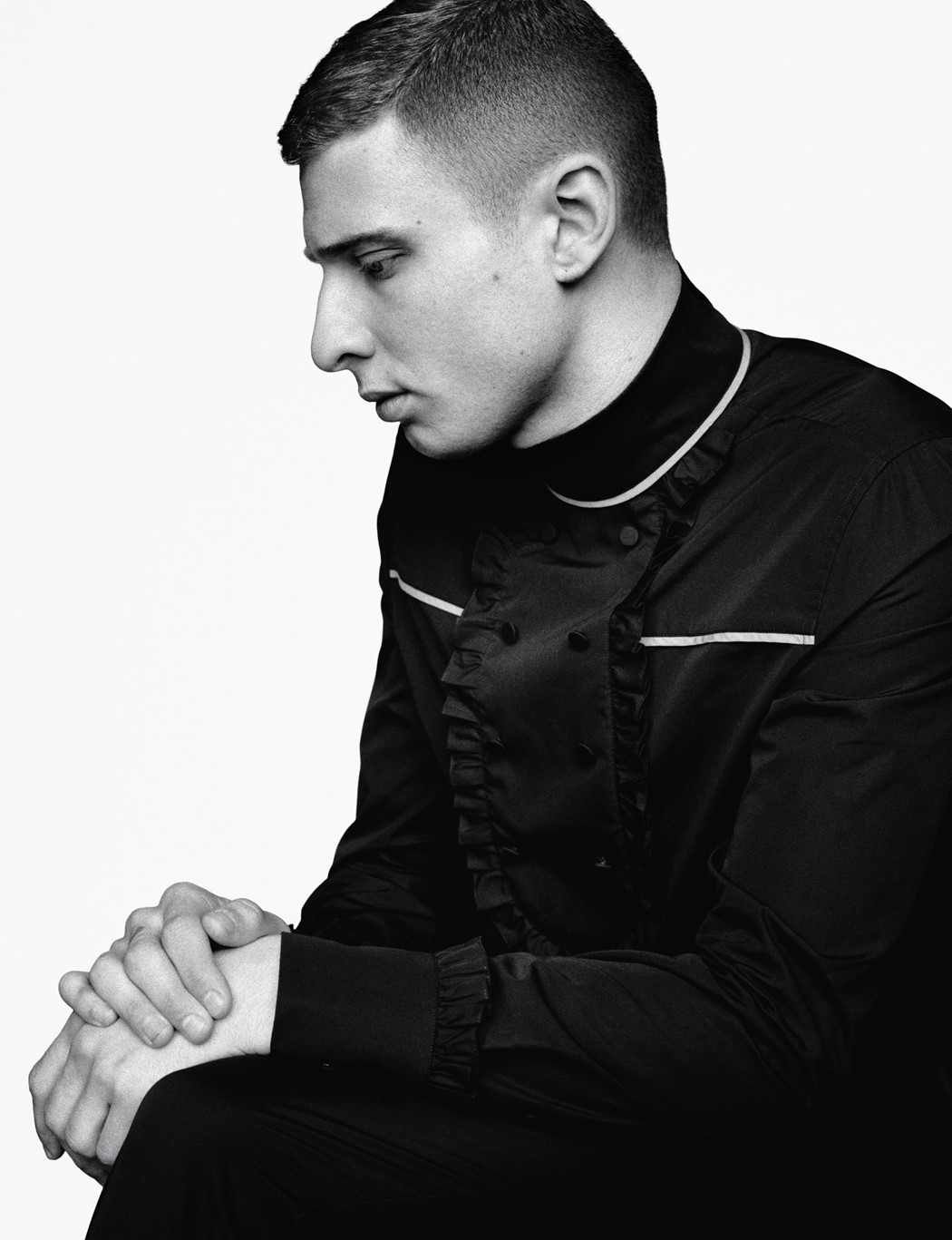

LEARN
“Why do you think that television series on history are so successful?” asks Prada. “At this point it seems the past doesn’t count, but any story is only about history – whatever queen, whatever tsar, the 16th century, just forms of history. It seems that history doesn’t count but in some worlds it counts a lot. Why? Why don’t we learn it! That’s my point.”
We are talking about the surface world we seem to inhabit at the moment, one of TV screens and touch screens, binging on historical dramas – or faux historical dramas – with little consideration for the actual context, refusing to go deeper.
“But life is not a surface! It touches you badly,” says Prada. “There is sickness, there is death, there is loss. Any kind of problem, it is not the surface.”
Instead we glide over pictures of food, over pictures of ourselves, it’s all the same. Spout Oprah-style platitudes in captions and create fake alliances through likes, with nauseating, over-enthusiastic comments and half-wit emojis. While all the time data is harvested, manipulated and made money out of; clearly, I am not a fan of the online world, of social media. Miuccia Prada is far more sanguine about it: “There is a sense of being used, but it is also the biggest revolution after the wheel. It is a huge revolution.”
We’re all algorithms these days. I think it’s an apocalypse...
She laughs and says, “Then let’s call it change...”
Which is where the historical drama observation comes in. “I didn’t talk when I was young because I was ignorant,” she explains. “But the more I was learning the more I was talking. And so I think everything comes down to knowledge, culture, studying, because otherwise, booof – how is your life? It comes to what?”
She continues: “I learned my life through books and movies. I am who I am because I learned through reading and watching and listening to other people. You know other people’s experiences, you know their stories, you know history, then you can play with your life and apply it to your life. An empty life is a disaster and people should know that.”
What Miuccia Prada is passionately committed to is the idea of learning for a lifetime and an idea of self-creation through culture and creativity. This extends to her ideas for fashion, of course. Prada the designer and the company are not there merely to push product, neither are they there to give a lecture – as Mrs Prada would say with her own, rather teenage Italian emphasis, “That is too boorring.” This is fashion, not social work. Rather, there is an ambition for the enjoyment she provides through fashion, an opening up of other worlds for the consumer: “If you do not have an idea in your life, how can you live? My whole thing, through the Fondazione and Prada, is to make culture attractive. That is, deep down, my goal. If it is not attractive, no one listens. If it is too serious, no one cares and they think it’s boring. It is to make people understand that culture is necessary in your life. It’s not a flower in your jacket, it’s necessary.”
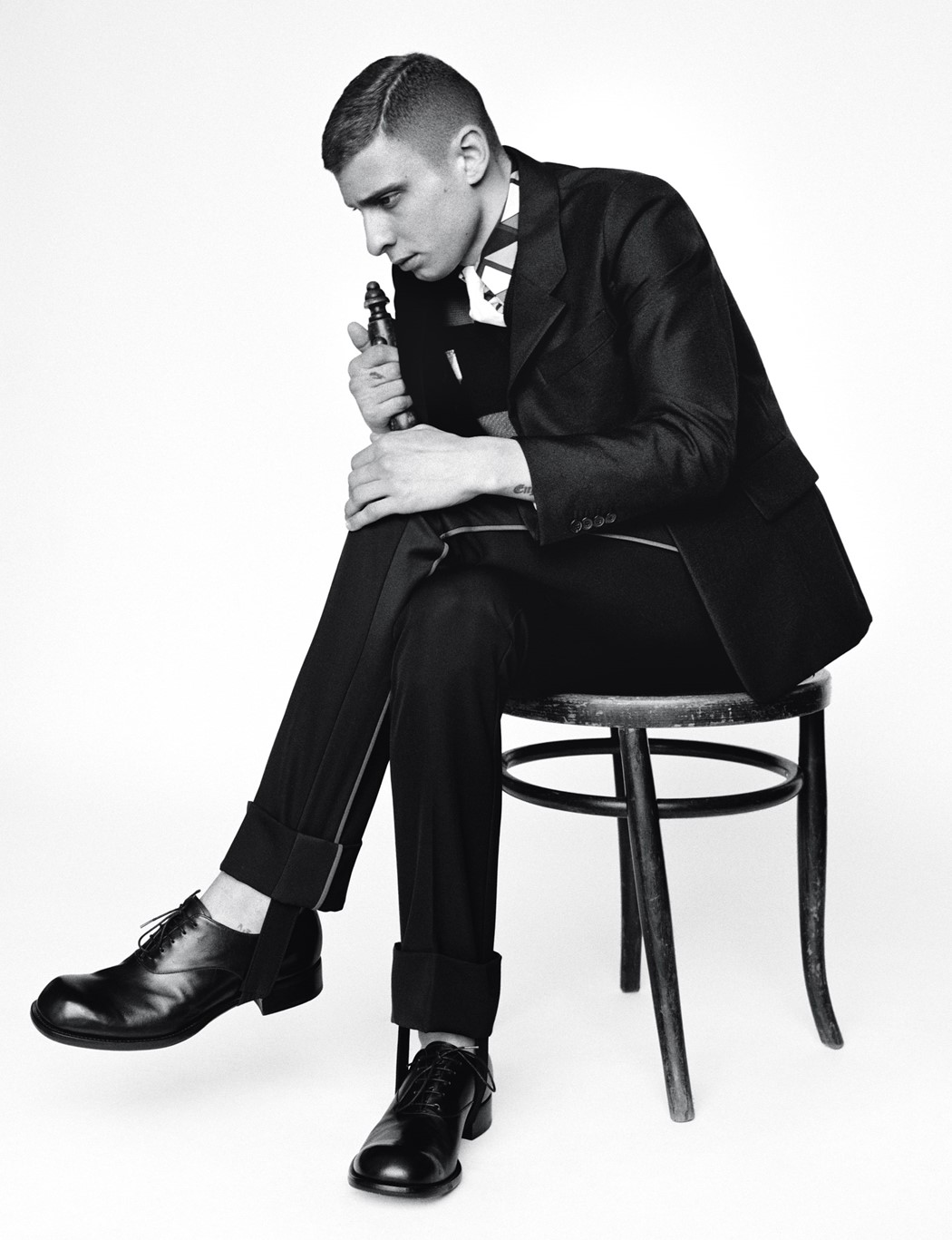
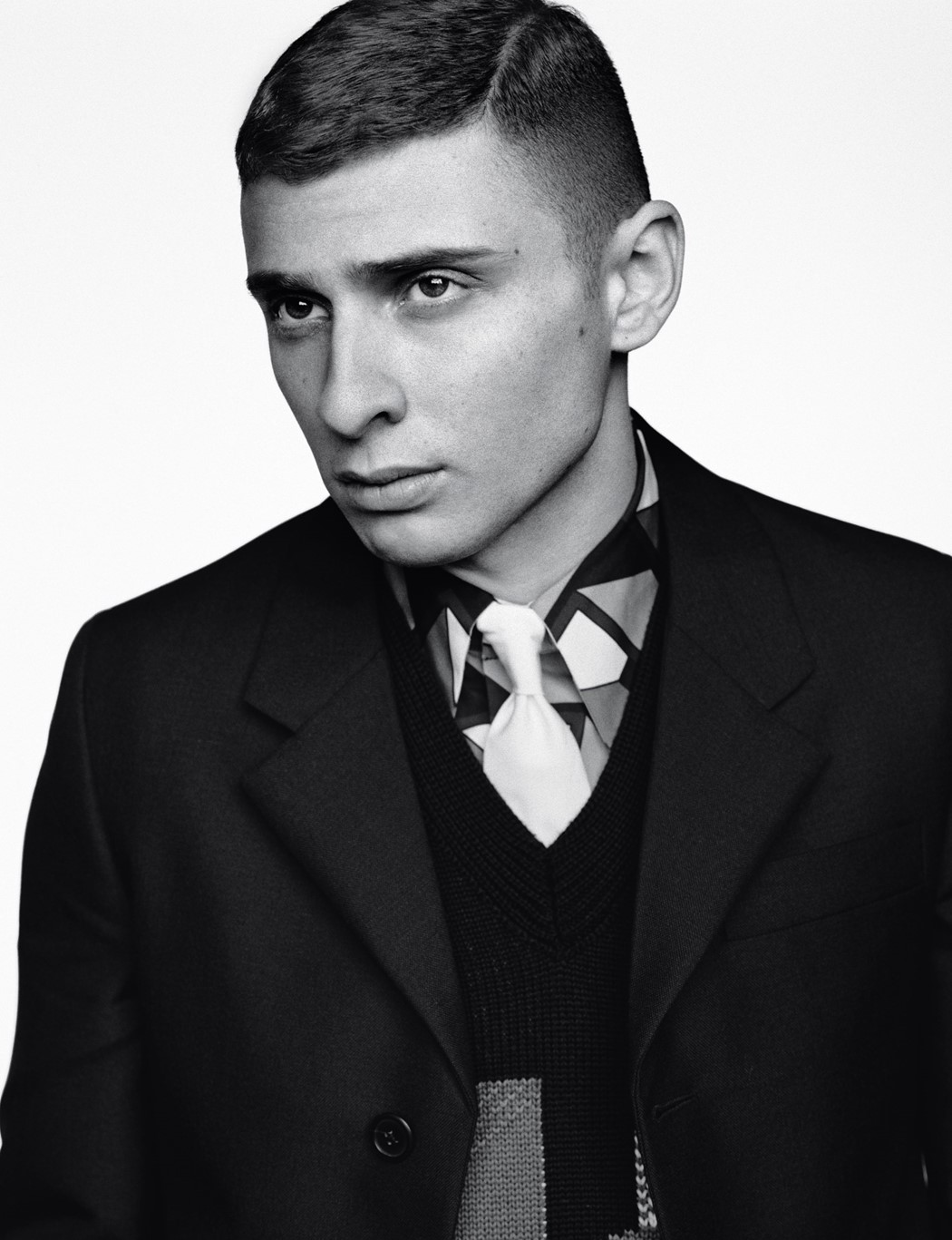
CHALLENGE YOURSELF
“The beauty, the sophistication, but how to give them a value that is positive? I do not want to surrender just to the pleasure of richness and beauty. I am too strict in my mind to allow myself that. Also, because I am not like that! Yes, I am half like this and half the opposite.”
Miuccia Prada often works in a counterintuitive way – she enjoys challenging herself. Maybe it’s because she is often at odds with herself, a lover of extremes brought together, as is often the way in her collections and as she is right now…
We are discussing the idea of decadence, its place in the culture of the 1920s and its place in the culture of the 2020s. “I am very interested in the idea of decadence,” she explains. “I don’t know how to approach it because it is so wrong in theory,” she laughs. “I am interested to see how decadence could become a value and not an insult.”
It should be remembered that for Miuccia Prada ‘decadence’ has something of a moral and political dimension – she does have a doctorate in Political Science after all. Strangely, the word ‘decadence’ has itself degenerated in meaning and now seems something more akin to an over- indulgence in fashion fabulousness or cream cakes – it is not. The thing that is bothering Prada the most is the idea of beauty – pure, unadulterated, beauty.
“Also, it is to play with beauty by itself, the value of beauty,” she says. “It was always a concept I was negative about because beauty emptied of content is nothing for me. But I want to start working on that concept, pure beauty by itself. I have to find a reason and the sense of it.”
Maybe that’s the reason her men’s show began to the strains of Wagner, as a Mitteleuropean dream scenario unfolded in a Giorgio de Chirico inspired piazza … Or maybe that’s a nightmare scenario, pure beauty at the service of something more sinister. As is often the case, the raw experimentation of ideas in the collections starts with the menswear and is a narrative that continues in the womenswear. In Pradaland, the sexes are not separate; they’re different but equal.
“There is so much in the collection that I can translate much better into the women’s,” she explains. “I want to start from this but there are so many elements that are about strictness and beauty. There’s seduction and a bit of decadence. I am trying to mix the two.”
Which brings us back to the 20s, both then and now.
“So the 20s, I have to deal with it, conceptually. It was having fun before the disaster,” she says of that time. “Of course, it was the period when they invented any kind of Modernity; in art, in everything. They invented so much. The beginning of contemporary was then.”
And now? Of course, it’s complicated...
“I HAVE ALWAYS SAID THAT SIMPLIFICATION IS A DISASTER! IT IS THE RUIN OF EVERYTHING. I AM FED UP OF PEOPLE SAYING PRADA IS TOO COMPLICATED. A BRAND HAS TO BE SIMPLE. THIS BRAND IS THIS, THIS BRAND IS THAT… LISTEN, THIS BRAND IS COMPLEX, LET’S MAKE AN ADVANTAGE OUT OF COMPLEXITY. WE HAVE TO DO WHAT WE ARE”
BE COMPLEX
“What I don’t understand is why in fashion most of the journalists just want ‘modern’ – and what does that even mean?”
So that’s ‘modern’ with a small ‘m’ and one of the most over-used words in fashion writing, alongside ‘iconic’. Indeed, what does it mean? We’re talking about the penchant for clever-looking clothes that seems to have abounded over the last few years, where their intelligence is judged not by the ideas behind them, but just by the look of them. This is something I often compare to a stripper wearing glasses and carrying a briefcase – just because you have glasses and a briefcase, it doesn’t make you a lawyer; you’re still a stripper.
“There is nothing I hate more – the look of the clever and the fakeness of it.”
Instead, Miuccia Prada has decided to pamper life’s complexities and actually make clothes that really do have intelligence and thought behind them and yet – and this is her great gift – to make them look effortless, chic and infinitely desirable. Her collections can be read in two ways: on the surface, which just gives you that instinctive pull towards something desirable. Or more deeply, where the complex thinking behind a collection might actually merit you selling a kidney to buy a coat. She has the uncanny knack of giving people what they want, but not what they thought they wanted.
“It is about instinct. What I do is very often about instinct,” she says. At the same time, she justifies her instincts by thinking about why she is feeling the pull of pink, or workwear, or the Wiener Werkstätte, or whatever it may be.
“I have always said that simplification is a disaster! It is the ruin of everything,” she explains. “I am fed up of people saying Prada is too complicated. A brand has to be simple. This brand is this, this brand is that… Listen, this brand is complex, let’s make an advantage out of complexity. To start to enhance the idea that complexity is necessary and simplification at a certain point is wrong.”
She continues: “The world is a super complicated place, people are super complicated – how can you simplify them? With the company, we have decided to embrace the complexity, which is really our soul. We have to do what we are. People respond to the truth.”

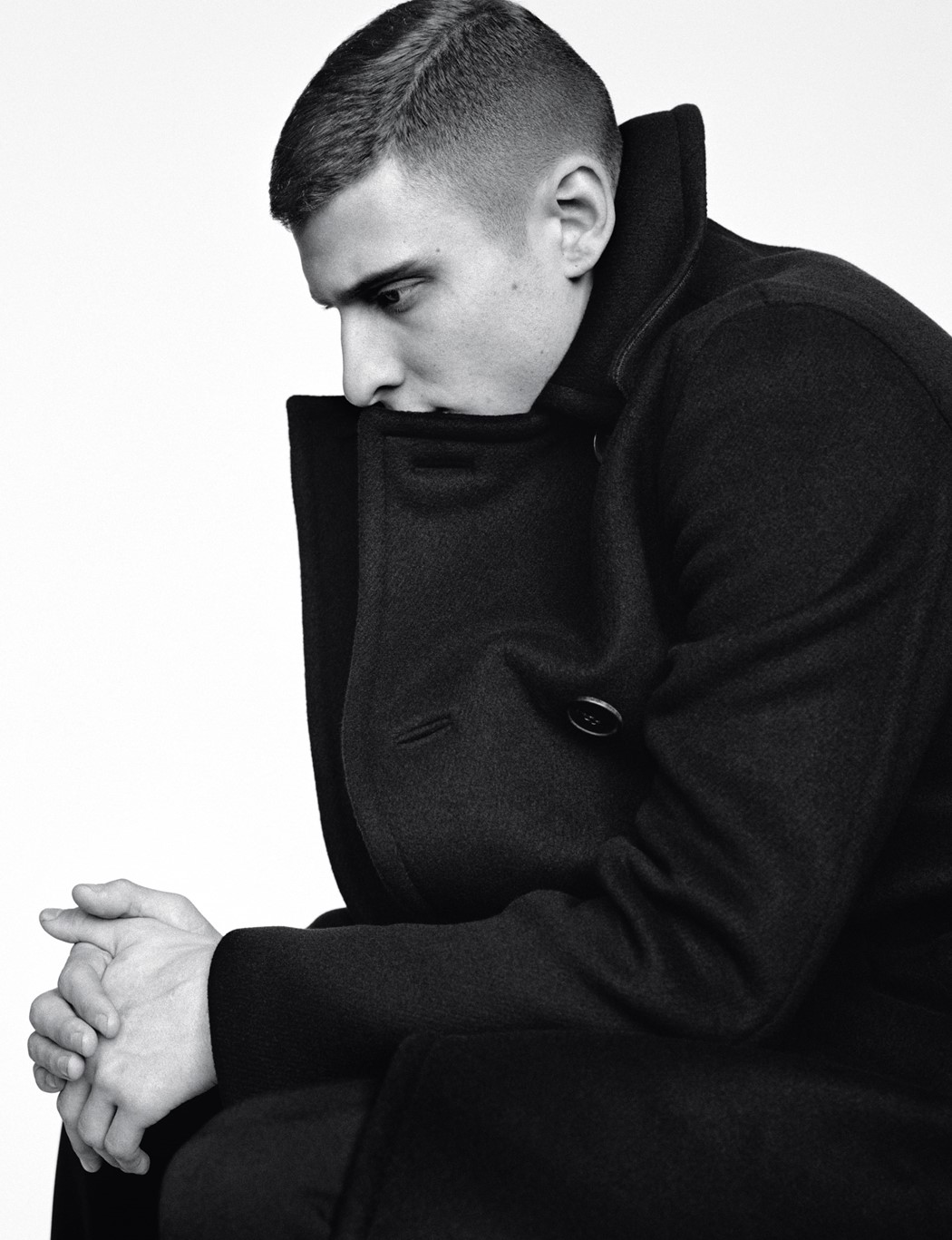
COME TOGETHER
“I was talking about this with Theaster Gates a few days ago ... There were a very special few people. Now it is more dispersed. They all used to be in the same cities: London, Paris, Moscow ... They’d vacation in the same places. They created a community. How do you create a community now when people are always somewhere else? To create one you need to be in the same place.”
We are talking about the 1920s again, and whether it is possible for an avant-garde to exist today in the same way, with people coming together and groups and movements being formed, through all sorts of disciplines.
“You have to be free to talk, to be inspired, to be present – otherwise censorship comes in,” she says. “In Milano, you used to be able to go to a place and find everybody there, clever people, and have free discussion – can you imagine? That is something I deeply miss.”
In fact, one of Miuccia Prada’s favourite activities is to sit in a bar, talk, and say whatever the hell she likes. She enjoys the company and inspiration of clever, amusing people whether this is the artist Theaster Gates, her great friend Francesco Vezzoli, or the film director Nicolas Winding Refn, all of whom have made an appearance in this conversation. She listens to and thinks carefully about their ideas.
“We can talk about everybody congregating,” she says. “The avant-garde is only possible in this way. It is against superficiality because there is a community where different minds come together. Discussing, talking, having fun. It has to be physical; people have to be there. This thing of intelligent people being together, I am kind of fixated on it and yet I don’t quite know how to make it work. But it is something nice to think of, the value of real presence, of real communication.”

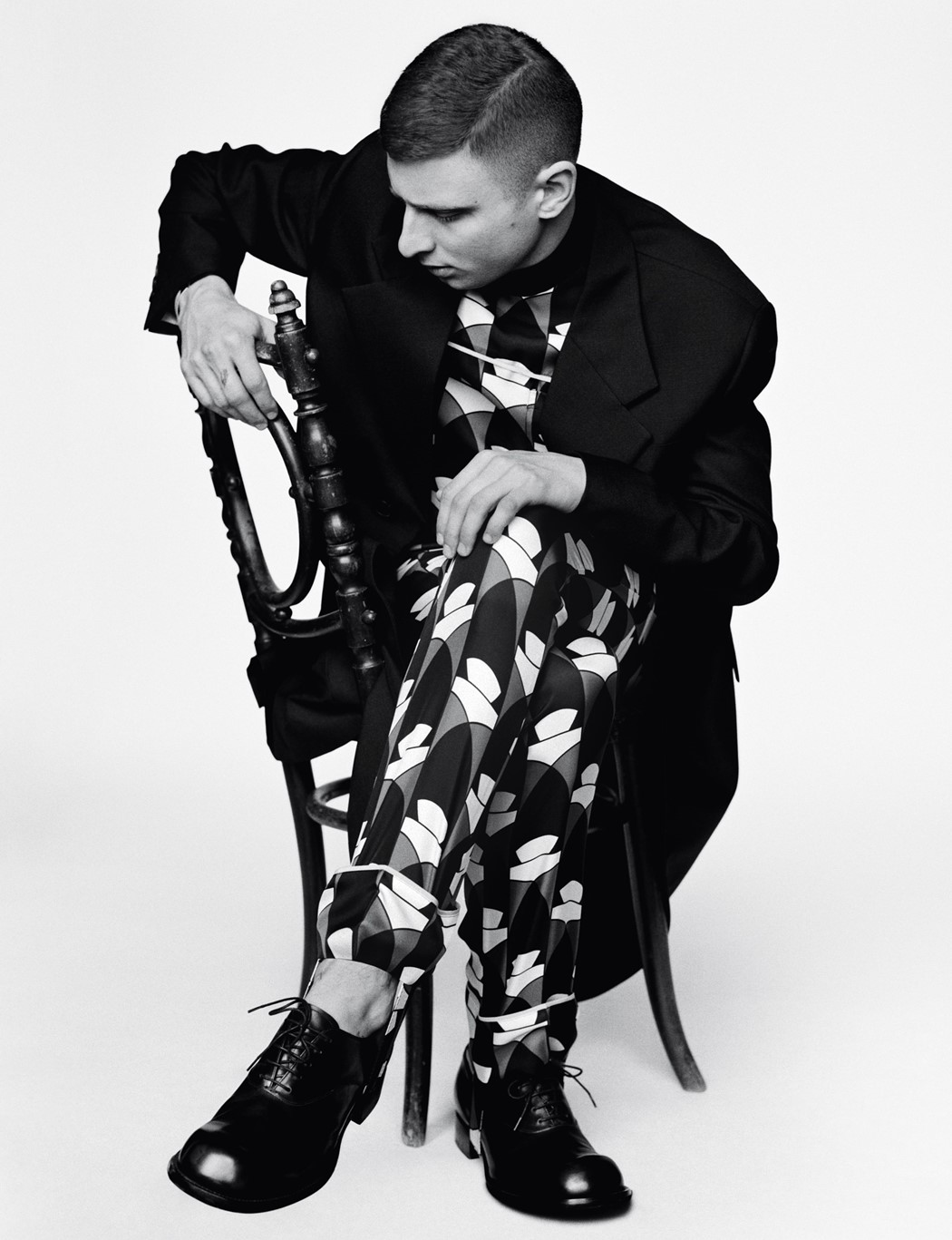
IN CONCLUSION
“I am not interested in power for the sake of it, but it can be useful,” says Miuccia Prada, one of the most powerful women on the planet. And yet she wears her power lightly. “The question of women is still big, still big,” and it is a question that has always concerned her. Over the years she has quite often said to me: “You need more power!” Now, I put it to her that men seem to be in more confusion than women are.
“To be honest, I think the problem is more with women than men,” she replies. “Men, they have the power, they can become more gentle OK, but we have to become more powerful. They are in a fantastic situation, if they want to become more gentle and nice they can, they still have the power. It is us who have to struggle. They are already free to be whatever they want, so they have the freedom, they have the power.” She adds: “You have to know more. Study, read more, be more clever and impress them. Can you imagine that, around a table? If a girl, maybe not even beautiful, she starts talking and she kills all the men knowing more – how fantastic!”
At the end of our interview Miuccia Prada sums up: “I am more positive this last month as I am thinking, thinking, thinking. I see so much that can be done and it is kind of a hope.”
On 23rd February it was announced that Raf Simons would be joining Miuccia Prada’s company as co-creative director. It seems she might be taking steps to set up the creative community in Milano she has long been hoping to see again.
GROOMING Matt Mulhall at Streeters SET DESIGN Julia Dias at The Wall Group PHOTOGRAPHIC ASSISTANTS Lex Kembery, Simon Mackinlay STYLING ASSISTANTS Niccolo Torelli, Letizia Maria Allodi, Kiran Samra PRODUCTION Ragi Dholakia Productions ASSISTANT PRODUCER Claire Huish
The Summer/Autumn 2020 ‘High Art Pop Culture’ issue of Another Man is now on sale internationally. Head here to buy a copy.


